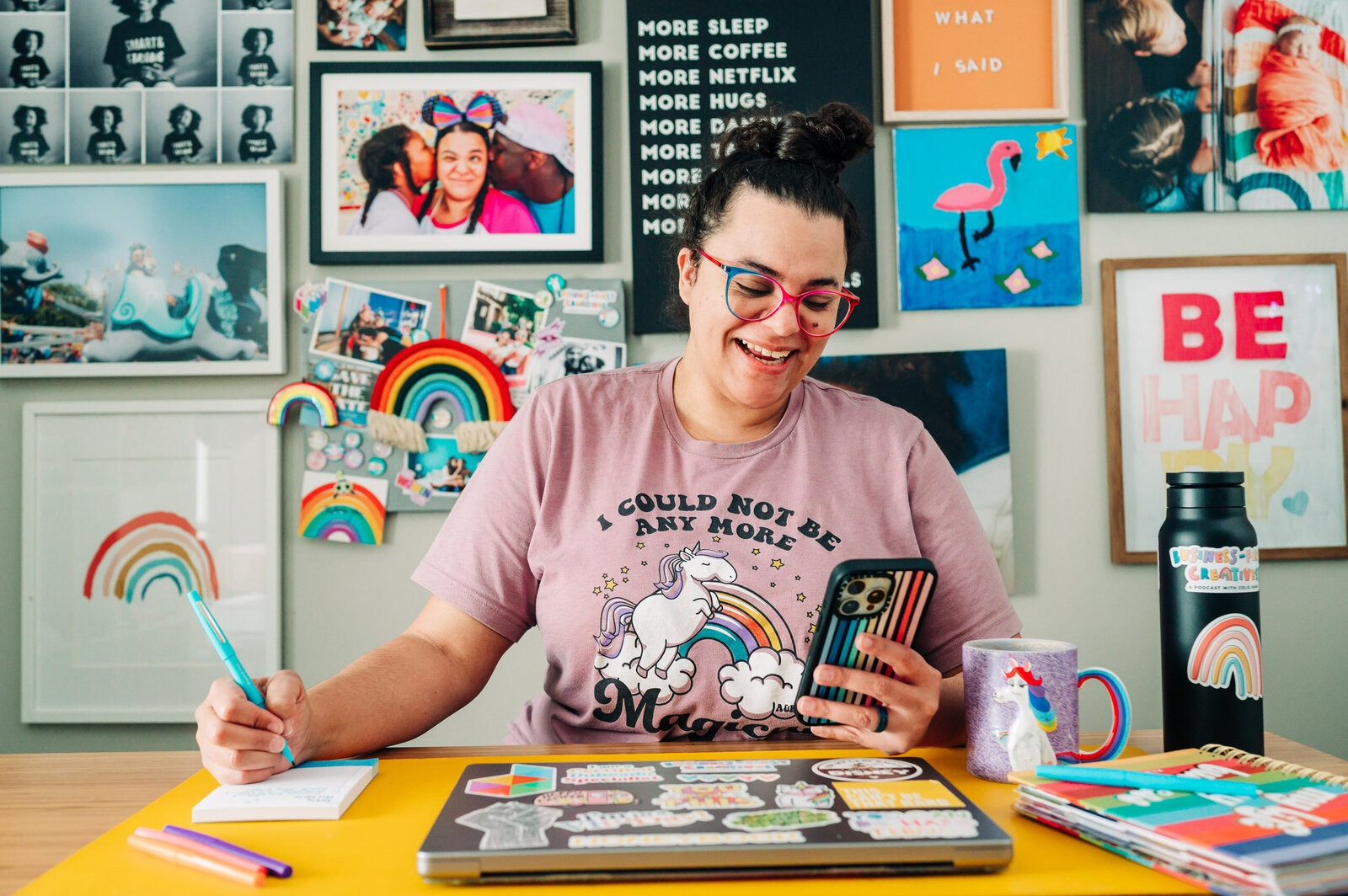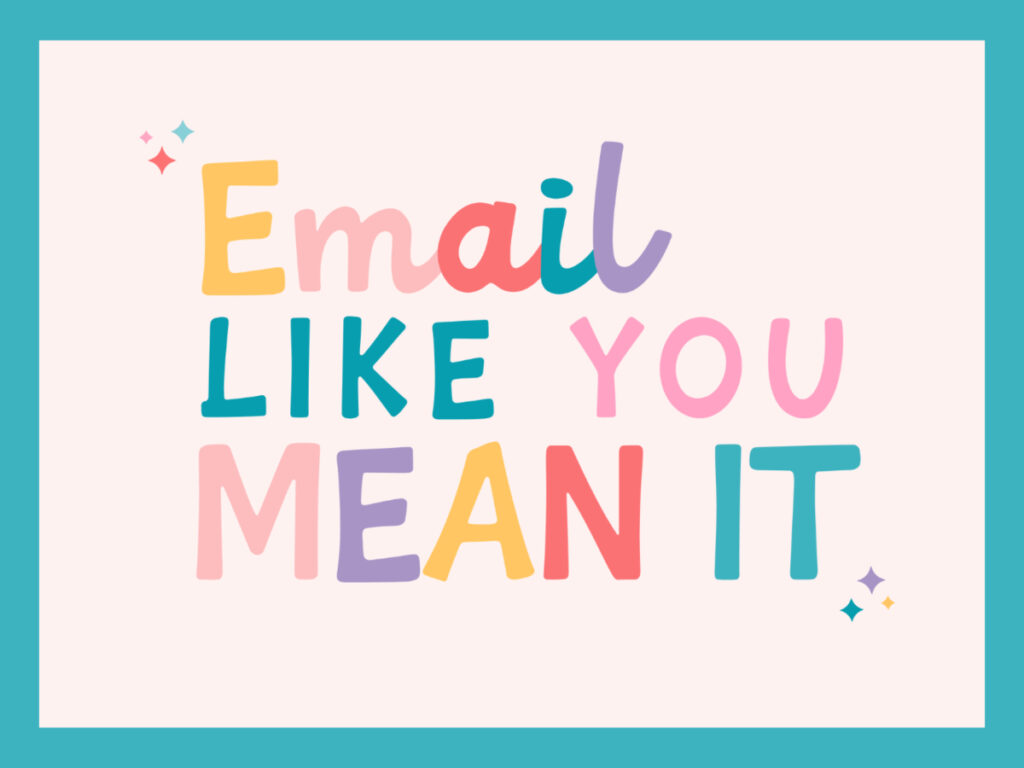Finally stop overthinking what to say and when. This free guide helps you write clear, consistent emails that sound like you — and build trust without burnout.
GRAB THE Client Experience Email GUIDE!
Blog Categories
A podcast where you join me (Colie) as I chat about what it takes to grow a sustainable + profitable business.
Business-First Creatives Podcast
CRM Guru, Family Filmmaker, and Host of the Business-First Creatives podcast. I help creative service providers grow and streamline their businesses using Dubsado, Honeybook, and Airtable.
Hey, I'm Colie
Client emails can change everything in your business. The right message can move a lead from “I don’t have time” to “Where do I sign?” The wrong one can leave them cold, confused, or gone for good.
That’s why I want to tell you about Geneviève. She joined my “Email Like You Mean It” course with one goal: to make her client emails faster, clearer, and less stressful. She ended up booking a $15K project from a single message.
This is how it happened.
But first, hi, I’m Colie. I help service-based business owners write client emails that set boundaries, save time, and create a five-star client experience. If you’re ready to stop overthinking your messages and start sending client emails that close deals and build trust, check out my course, Email Like You Mean It. You’ll get the exact framework and tools my students use to communicate with confidence, wow their clients, and book more work without adding more hours to their week.

Before the Course: Every Email Felt Like a Big Deal
When Geneviève first came to me, she ran a busy quiz funnel business for e-commerce brands. She excelled at building funnels, but client emails were another story. When it came to writing them, she often felt unsure and stuck.
She kept second-guessing her tone, unsure if she sounded too pushy or too soft. Drafts sat overnight while she debated every word, and even then, she didn’t feel confident pressing send.
She told me that at the end of a workday, she often felt like she hadn’t done much, not because she wasn’t working, but because every email felt like it took an emotional toll.
The result? Slow replies, missed opportunities, and more stress than she wanted in her business.
Want to write follow-up emails that actually get replies? Read my full guide with examples you can copy here.
What Most Courses Miss About Client Emails
Geneviève had taken other email courses before. They taught her how to write marketing copy. They gave her tips for newsletters. But they didn’t teach her the skill she needed most: how to write client emails.
This is a gap I see all the time. Most courses focus on selling to new people. But what about the people who have already paid you?
Your client emails need to set boundaries, answer questions, and build trust. They shape the client’s whole experience. If they’re rushed or unclear, the relationship suffers.
That’s why I created “Email Like You Mean It.” It’s not about catchy subject lines. It’s about making every client email simple, kind, and clear, while still protecting your time.

The First Big Shift: A Framework That Works Every Time
When Geneviève joined the course, she learned my 3P Framework for client emails. It’s a simple way to make your writing feel professional, personal, and to the point.
She started using the framework right away, and what once took hours now took only minutes. Drafting client emails became fast and clear, with no more endless tweaking.
That speed came from clarity. She finally had a structure to follow. She didn’t need to overthink every word.
Want to use email to build real relationships? In this post, I’m sharing how to write messages that turn strangers into friends.
The $15K Client Email
Then came the big moment.
A lead reached out to Geneviève. He had already been on several discovery calls with other service providers. He was tired. His message was short: “I don’t have time anymore. Just tell me your price.”
This was tricky. She couldn’t just send her rate. Her work was custom. She needed to explain why a call was still important, without losing his interest.
In the past, she would have spent hours worrying about how to word this client email. She might have put it off for a day or two. But now she had the tools from the course, and a custom GPT she had trained with the same principles.
She wrote the draft, ran it through her process, and achieved the perfect balance of firm and friendly.
The result? The lead booked the call. After that, he signed a $15K project.
Want to grow your email list while networking in real life? In this post, Tiffany Crenshaw shares how to collect leads at in-person events. Read it here.
The Daily Wins That Matter Most
That email was a huge win, but Geneviève also noticed smaller changes in her business. The biggest surprise was how much lighter she felt. She no longer needed friends and family to review her drafts, nor did she let emails sit overnight while she second-guessed herself. Writing emails stopped draining her energy and started feeling simple.
She told me one of the biggest surprises was realizing how much time she was wasting before, not just on writing, but on managing her own emotions about what she wrote.
Rethinking the Client Experience
One of the most significant changes Geneviève made was to see client emails as part of her full service, not just admin work.
Before, she would send one big offboarding email at the end of a project. It included deliverables, a request for a testimonial, and an invitation to her referral program, all in one message.
She realized that was overwhelming for clients. So we broke it into three client emails, spaced out over a few days:
- Deliverables
- Testimonial request
- Referral program invite (triggered after the testimonial is submitted)
This small change made her emails easier for clients to respond to. It also increased the chances that they would actually give her a testimonial and join her referral program.
See how it’s done in action. Watch this video to learn the three essentials every client email needs to work for you.
Using Systems to Support Client Emails
We also talked about how tools like Airtable can make client emails easier. Geneviève now stores client info in one place and uses it to trigger certain emails automatically.
For example, when a client fills out a testimonial form, that can trigger an email inviting them to join her referral program. No extra steps. No extra reminders.
This kind of system keeps the client experience smooth and saves hours of manual work.
Want ready-to-use email templates that make client communication smooth and stress-free? Read my post: 3 Must-Have Email Templates for Streamlining Client Communication.
Mid-Project Client Emails for More Value
Another gap Geneviève noticed was in the middle of her projects. She delivered quiz funnels, but she didn’t have a standard mid-project email.
We created one. Clients learn what to watch for in the first 30 days after the quiz goes live. They get clear guidance on reading their data. Suggestions for improving results round out the message.
This not only helps clients get more value from her work, but it also gives her more data for case studies and marketing.
The Bigger Lesson
Geneviève’s story is proof that client emails can be one of the most powerful tools in your business.
They’re not just about sending information. They’re about shaping how clients feel when they work with you. You’ll stand out from other providers. Big deals will close more easily. Your time and energy will be protected.
The problem is, most of us were never taught how to write them well. We fall back on rushed replies, overthinking, or copying other people’s style.
But when you have a clear framework, a repeatable process, and the right systems, everything changes.
Write Client Emails Like You Mean It
If you want to spend less time overthinking and more time delighting clients, “Email Like You Mean It” is for you.
You’ll learn how to write client emails that are:
- Clear and professional
- Warm and personal
- Firm when they need to be
- Fast to write and easy to send
You’ll also see how to use your emails to improve your whole client experience, from onboarding to offboarding.
This is the same process that helped Geneviève go from stressed and second-guessing to confident and closing $15K projects.
Your client emails can do the same for you.
Join “Email Like You Mean It” today and make every message count.
You’ve mastered your craft. Now make sure your client emails and systems match. For quick tips, real examples, and simple ways to wow clients while saving time, come say hi on Instagram or reach out. I’m here to help.

